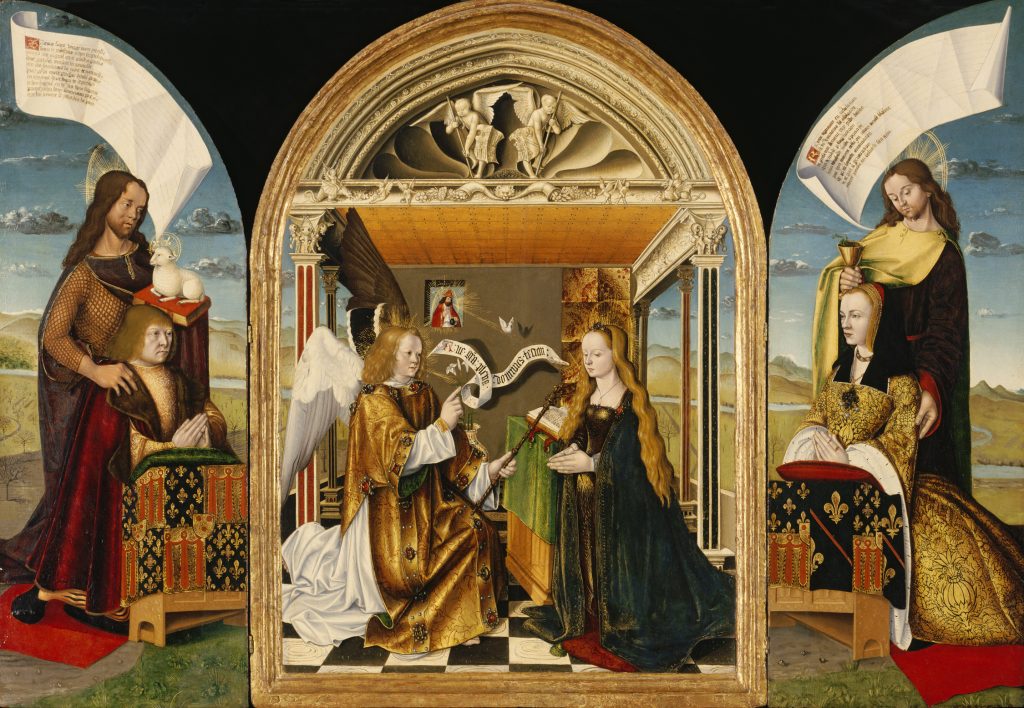Activity Idea: The Latour d’Auvergne Triptych (Quick Tip)
Use the following strategies with The Latour d’Auvergne Triptych
- Identify and list details of the painting’s setting. What time of year do you think it is? Why do you think that? What does this information tell about the season? Discuss how the setting confirms or supports the stories in the painting. Consider the role of setting in writing and painting. How does setting affect the reader’s/viewer’s understanding of the work?
- When the side panels of this triptych fold inward, they cover the central painting like a book. Choose an event in your life that has had a profound effect on you. Illustrate this story on the central panel of the triptych template [link]. Write the story of this event on the folding side sections. Initially share just your illustration with your classmates, and have them describe or guess the event you are illustrating. Follow by reading your written story. Create a class library for the triptych-form books.
- In writing, an author can describe a character with an endless stream of words. Artists communicate the life and personality of a figure using visual details, facial expression, clothing and setting. Discuss the items that the two saints in the painting are holding. These are attributes, or clues that help the viewer identify the figures. Such attributes usually relate to important events in the life of the person. Determine an attribute that would identify you. Draw or paint the attribute. As a class, match attributes to classmates and give reasons for these matches.
- In the Middle Ages and Renaissance, only the elite members of society were taught to read and write. Altarpieces and frescoes communicated Christian stories to illiterate believers. Write a journal entry about how your life would be if you could not read the written word. Consider the following: How would that handicap affect the way you see and understand the world? In what ways would that make you more dependent on visual images? Does the fact that you can read words make you more or less able to read visual images?

